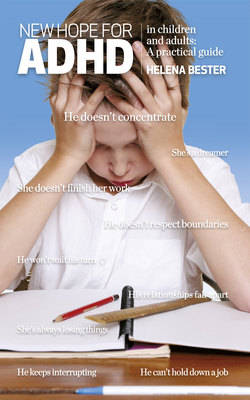Читать книгу New hope for ADHD in children and adults - Helena Bester - Страница 42
На сайте Литреса книга снята с продажи.
Problems with boundaries
ОглавлениеPeople with ADHD symptoms experience boundaries differently to the average person. It is often said that they have problems with boundaries. In all probability his teacher knows that Peter, who is always standing at her desk in her personal space, is an ADHD child. It sometimes feels as if you can see him when you wake in the middle of the night; he is always there, right in your face.
Fathers often get frustrated by this. Dad returns home from work tired and Rafiq is with him, on him, hovering around him to tell him a thousand things in one breath. When Dad phones home from London he can scarcely talk to Mom because Rafiq takes over the phone. At the end of the call, Rafiq is unable to tell Mom what Dad said, and Dad has no idea what Rafiq was trying to tell him. Dad is angry with himself for getting irritable with his child. Rafiq is unhappy and tearful. Mom must heal the wounds.
The adult sufferer will burst into your personal space and be completely unaware that he has crossed a line. I have never met anyone with ADHD who knocked quietly or coughed discreetly and asked whether he could come in.
A while back, four of us – me, a childhood friend, her mother and another friend – went away for the weekend. Elaine’s mom is in her eighties and still a classic ADHD sufferer. It is a privilege to experience her enthusiasm and zest for life, and we often chuckle at her direct way of saying things. On the day I was taking Elaine and her mom back to the airport after the weekend, she was trying her best to listen to a story I was telling, but my voice was soft and the story long. A hair hanging down in front of my eyes kept distracting her attention. Unable to stand it any longer, a determined expression came over her face, she reached over, grabbed the hair firmly and yanked it out. “That’s better,” she said.
